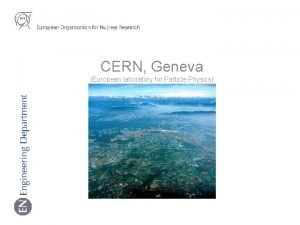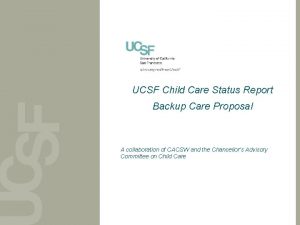HOPE Horizons in Physics Education A European Academic

- Slides: 1

HOPE - Horizons in Physics Education: A European Academic Network Nadine Witkowski 1, Ivan S Ruddock 2 and Marisa Michelini 3 1: Université Pierre et Marie Curie, Paris, France, 2: University of Strathclyde, Glasgow, United Kingdom, 3: Università degli Studi di Udine, Italy www. hope-network. eu nadine. witkowski@upmc. fr, i. s. ruddock@strath. ac. uk, marisa. michelini@uniud. it Abstract The academic network HOPE - Horizons of Physics Education - has been launched for three years from October 2013 with the support of the Life Long Learning Programme of the European Union. It is effectively the sixth thematic network in physics education in a series of networks beginning in 1995 with European Physics Education Network (EUPEN). The 71 full partners are from 31 LLP-eligible countries of the European Union along with Norway, Serbia, Switzerland Turkey; they comprise 65 academic partners and 6 non-academic partners including the European Physical Society. The consortium is further enriched by 10 associated partners including the Institute of Physics, the American Physical Society, IBM Zurich Laboratory, GIREP (Groupe International de Recherche sur l'Enseignement de la Physique), and various universities in both North and South America. The project is carried out by three responsibles Nadine Witkowski – Project Leader (FR), Marisa Michelini (IT) and Ivan Ruddock (UK), with the support of an Advisory Committee: Urbaan M. Titulaer (AT), Jan Naudts (BE), Outline of HOPE Hendrik Ferdinande (BE), Evangelos G. Vitoratos (GR), Gareth Jones (UK). With an overall aim of enhancing the impact of physics within Europe and its visibility in society, the network research and share good practice within four themes: WG 1) the factors influencing young people to choose to study physics (leaders Marek Trippenbach, Elzbieta Stephan – PL)); WG 2) physics graduates’ competences that enable them to contribute to the new needs of the European economy and society (leaders Hay Geurts (NL), Jos Rogiers (BE); WG 3) the effectiveness and attractiveness of physics teaching in Europe’s university physics departments and their competitiveness in the global student market (leaders Eamonn Cunningham (IR) and Fernando Cornet (ES); WG 4) strategies for increasing the supply of well-trained physics school teachers and for developing links between university physics departments and the teaching of physics in schools (leaders Mathelitsch Leopold (AT), Mohoric Ales (SL). The main activities and the preliminary results of the carried out studies are presented. Relevance of HOPE’s ultimate aim Background to HOPE 48% of all manufacturing jobs in the United Kingdom were in areas dependent on physics. [Physics and the UK economy, IOP, February 2010. ] HOPE directly supports: qthe Leuven Communiqué’s aspirations for the EHEA in 2020 qthe EC’s framework for education and training, “ET 2020” q“Innovation Union” q“Youth on the Move” “To enhance the impact of physics on the European economy and its visibility in society in general. ” Four interlinked aims q Inspiring Young People to Study Physics (WG 1) q New Competences for Physics Graduates – Fostering Innovation and Entrepreneurship (WG 2) q“Agenda for new Skills and Jobs” qthe European University Association’s Lisbon 2007 Declaration’s areas of priority: building the EHEA; promoting research and innovation; linking higher education and research q Improvements in Physics Teaching – Meeting Future Global Challenges in Physics Higher Education (WG 3) q Improvements in the Training and Supply of Physics School Teachers (WG 4) The HOPE network History of HOPE at a glance Governance of HOPE 71 partners in 31 LLP countries Ø 65 academic partners (blue); coordinators (red) Ø Large/small; research intensive/teacher training/PER Ø 3 associations (EPS, Italian Phys. Soc. , Int. Assoc. Phys. Students Ø 1 large facility (CERN) Ø 2 companies (yellow) Academic network - LLP programme Duration : Oct. 2013 – Sept. 2016 Timetable for HOPE Consortium 71 full partners 20 associated partners 31 LLP countries 5 third countries HOPE’s Methodology 20 associated partners inc. Ø USA: APS and 3 universities Ø Brazil: Sao Paulo University Ø India: Museum of Science, Hyderabad Ø Universities in Europe Ø IBM Zurich Ø Romania: National Institute of Physics and Nuclear Engineering Ø GIREP; UK’s IOP; Argentina: Physics Teachers Association Hope Work Group WG 1: Inspiring Young People to Study Physics: from January 2014 (Preliminary results reported at Helsinki Forum, September 2014) “To investigate and report on the factors that influence young people to study physics” 1 st meeting: Warsaw, January 2014; 2 nd meeting: Naples, May 2014 WG 2: New Competences for Physics Graduates – Fostering Innovation and Entrepreneurship: April 2014 → WG at work WG 3: Improvements in Physics Teaching – Meeting Future Global Challenges in Physics Higher Education, November 2014 → A. Questionnaire for first year students in partner institutions - to identify the factors that inspired them to study physics. “To recommend ways by which physics degrees can be enhanced so that graduates can contribute more effectively to new needs of the European economy and society, particularly through innovation and entrepreneurship. ” B. Interviews with students who completed the questionnaire in (i) - to probe some of the answers; to identify reaction to the chosen courses. 1 st C. Surveys of good practice among partners in outreach and competitions. Activities in progress, July 2015: D. Questionnaire for school pupils taking part in ‘Masterclass’ events. A. Survey of partners’ provision of training in enterprise and entrepreneurship. 1 st meeting: Dublin, November 2014; 2 nd meeting: Granada, June 2015 B. Survey of partners’ views on general transferable competences as defined in the EU’s Tuning project. A. A survey of partners to gather data to analyse the impact of transnational mobility in European Physics degrees, both at the bachelor and master levels, as well as vertical mobility between bachelor and master programmes. Activities underway, July 2015: E. Collection of national data on physics student recruitment trends across partner countries using physical societies, government departments. WG 1 -A: Inspiring Young People to Study Physics: Questionnaire for first year students in partner institutions - to identify the factors that inspired them to study physics. The questionnaire is composed by Ø 20 Likert scale questions on internal and external factors inspiring first year university physics students Ø 1 open question (most important factor) Information on student meeting: Lille, April 2014; 2 nd meeting: Hannover, April 2015 C. Surveys of, and interviews with alumni, employers and programme directors to identify the skills needed by industry and their provision by partner institutions. Results to be reported at Coimbra Forum, September 2015 “To improve the effectiveness and attractiveness of physics teaching in Europe’s university physics departments to help ensure their competitiveness in the global student market. ” Activities in progress: B. A survey of good/innovative teaching practice among partners inc. implementation of PER, and its practical implementation, i. e. why, whose initiative, institutional policy, barriers, disseminated, rewards Results to be reported at Constanta Forum, September 2016 Trialled Spring 2014 in eight partners: WG 4: Improvements in the Training and Supply of Physics School Teachers, June 2015 → Ø Imperial College London; Roma Tor Vergata; Aveiro; Patras; Craiova; Katowice; Warsaw; Novi Sad “To recommend strategies for increasing the supply of well-trained physics school teachers and to enhance the role of university physics departments in helping the teaching of physics in schools. ” Ø 350 students in trial Ø 2485 students from 34 partners in 14 countries in 2015 survey 1 st meeting: Zagreb June 2015; 2 nd meeting: Riga, November 2015 Preliminary analysis (June 2015) shows: Internal Factors more important than External Factors Most Important Factors: wish to understand the world around us; how things work; the universe; wish to learn advanced physics. Least Important Factors: scientist in family, friends, visit from university, wish to be a teacher. Mean Age when first became very interested in physics = 14. 2 years Other university subjects considered: maths, engineering, other science F % ranged from 18% to 62%, Mean = 29. 6% (in 9 Universities >40%) WG 1 -D - Secondary Student Questionnaire (SSQ): an inquiry focused on factors inspiring secondary school talented students to study physics SSQ - organized in 4 parts (include hope-WG 1 QA) Partners participating: 18 (+1) partners + 2(+1) associated partners Countries involved: 15 N of questionnaires filled in: 1565 Activities in progress: A. Identification of physics teacher shortage (if any) within partner countries. . B. Survey of the physics teacher profession within partner countries. C. Survey of trainee physics teachers’ and their reasons for choice of career. D. Survey of continuous professional development/in-service training within partner countries. E. Survey of partners’ involvement (if any) in physics teaching in local schools. Results to be reported at Constanta Forum, September 2016 Summary q Horizons of Physics Education is running during October 2013 – September 2016 q HOPE’s expected impact: number of school leavers who chose to study physics; training and employability of physics graduates; teaching of physics; international competitiveness; number of physics teachers and their training q Dissemination: annual Forums; newsletter; publications; reports; overview volume; website (www. hope-network. eu) q Stakeholders: partners in their own departments and institutions; EPS and national physical societies ⇒ ultimately national policy and initiatives. Further information at www. hopenetwork. eu and HOPE’s newsletters.

